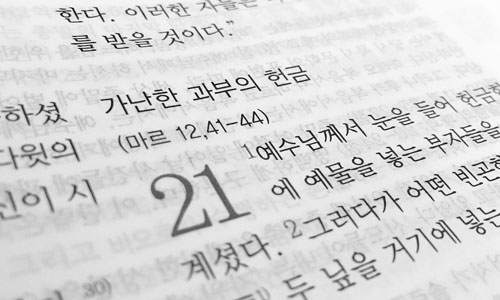Professional Chinese-Korean Translation Company
Korean and Chinese are related, as the background cultures of these two languages are intimately connected; they are dissimilar also: the grammar systems and even the written forms of Chinese and Korean are different. Translation of these two Asian languages requires excellent skills based on both language understanding and cultural knowledge. As one of the leading Chinese-Korean language service providers, Jinyu provides professional document translation and on-site interpretation services with a skilled native-speaker team and advanced management system. As of today, our expert translation has supported hundreds of groups and persons to get their certifications, legal contracts, technical papers, and marketing materials in perfect target languages.

Why Choose Us
More
Jinyu has been a proficient Chinese-Korean translation company since 2004. With more than 15 years of language experience, our linguists are the best in handling translation projects of all levels or different industries: medical, technical, business, software, political, financial, and so on.
We only work with native speakers for translation tasks as we know that only in-country translators know how to better convert your language into another version so that the target audience will get the full nuances. At the same time, we are always using human translation for all of our projects to ensure the best quality.
Meanwhile, inside our team, there is a strict quality standard for linguist recruitment, translation procedures, proofreading, and resource management. Every tiny detail of your document translation, such as glossary reference, punctuations, typesetting, style, and synonyms, is explicitly stated in our internal regulations.
More
As one of the ISO9001:2015 certified business providers, our management system for translation services is trusted by customers of all fields. From the translation order processing to the project process arrangement, Jinyu is working conforming to the highest standard.
Within the dominant influence in the language area, our translation service has been approved by some of the local authorities: court (legal translation), accounting firm (financial translation), and municipal administration centre (public translation). All of the organizations have maintained a long-term partnership with us.
Apart from the support from local organizations, we have received positive credit from big businesses, such as Huawei, Alibaba, Tencent, etc., for our Chinese-Korean translation services. Our view of sustainable development on language projects is tested true via such kind of cooperation.
More
Our translation turnaround time is always punctual. To achieve that, we have a flexible language team that is capable of serving high-quality translation at a changeable speed. For abruptly increased requirements or emergency team events, we adapt our translation output well based on complicated situations.
All of your Chinese-Korean document translation is guaranteed by an accurate proofreading process. The skilled proofreader or senior linguists inspect through their intensive experiences and knowledge to make sure that the translation style and overall quality are good enough to deliver.
We use state-of-the-art technology in our translation and proofreading. Translators are getting reminded of expression suggestions, term selection, typo errors, formatting advice, context consistency, and so on, depending on our memory database and corpus base to push the quality and speed forward.
Jinyu’s Chinese-Korean Translation Insights
1. Differences Between Korean and Chinese
As a qualified translators of Chinese and Korean, we are well aware of both similarities and differences between these two languages. In general, Chinese and Korean differ more than they have in common. Here, we have listed some of the significant differences:
- Language family. Chinese belongs to the Sino-Tibetan family, while Korean remains undefined in terms of the language family.
- Characters. Korean is a phonetic text; that is, the Korean text itself is the reflection of its sound. When you see the word, you know its pronunciation. On the contrary, Chinese is ideographic writing. The words indicate meanings rather than pronunciations. Its glyphs are very complicated, and each word has its own glyph.
more
- Sentence orders. Chinese sentences are expressed in “Subject Verb Object” order, which is similar to English, while Korean is stated in “SOV” order.
- Type of language. Chinese is a part of the analytic language in which grammatical meanings are conveyed by using function words or word orders rather than inflexions. However, Korean is a member of the agglutinating language where users need to add different endings before and after the sentence to achieve grammatical functions.
- Honorifics. There are no honorifics in modern Chinese since it has been abolished in the last century. But Korean includes several honorifics in their daily conversations, such as “어머님 (mother)”, “아버님 (father)”, “형님 (big brother)”, and so on.


2. Korean to Chinese Translation Skills
During the translation process from Korean to Chinese, our linguists gathered great experiences of translation strategies and specific skills. Besides a couple of standard techniques, here are some of our useful skills:
- Reductive conversion: In Korean, many idioms and colloquialisms are freely translated from Chinese. When turning them back into Chinese, the only reductive transformation is enough.
- Supplemental conversion: To express the meaning of the original text more accurately, we often use the method of supplementing some words or phrases for translation.
- Split-combined conversion: including “divided translation” and “combined translation”. We usually divide a long sentence into two or more short sentences or combine two or more short sentences into one long sentence.
more
- Position-Shift translation: Korean and Chinese have different word orders and distinct expression habits. Therefore, in the process of language conversion, it is impossible to translate the original texts without changing their positions. The positions of subject, predicate, object, definite, complement, adverb and other sentence components can be shifted as needed.
- Reverse conversion: For the needs of expression and modification or because of different expression habits, the reverse conversion translation technique is often used for language conversion. For example, the original text is a negative sentence, but it needs to be translated into a positive sentence because of the expression.
3. Chinese to Korean Translation Examples
Here are some excerpts from our daily Chinese-Korean translation projects:
半导体制冷片的冷热端与散热片直接接触,可在两者中间涂加导热硅脂以提高传热效率。
对半导体制冷试验箱的箱壁厚度、保温层厚度以及冷负荷做了理论计算,热端散热选取空气强制对流散热的方式,对试验箱的结构提出了两个设计方案。
more
从韩国化妆品在华营销发展历程来看,其可分为四个阶段,分别为:起步阶段、发展阶段、调整阶段与扩展阶段。
热乳:在钢的再结晶温度以上进行的轧制,即不断地通过旋转乳辊之间的压力来改变钢坯形状的过程。热轧时金属可塑性高,形变抗力低,大大减少了金属形变的能量消耗。


4. Chinese-Korean Interpretation Services
Our team is offering Chinese-Korean interpretation services, too. For any business negotiations, professional conventions, international meetings, or personal gatherings, our face-to-face or remote interpretation team is ready to help you with the most proficient skills and the best services. Different from document translation, Chinese-Korean interpretation projects require more effort in coordination, reaction, and information processing. For example, the interpreter (especially a simultaneous interpreter) should always know the current sentence he or she is handling, the situation of the speaker, the condition of the partner, and the response of the audience. For this reason, the translation price for a simultaneous service is relatively higher than that of a document translation.
more
Here are some Chinese-Korean interpretation services from our recent project schedule:
- Interpretation of Korean Qingdao Import Goods Fair
- Interpretation of China International Import Expo Shanghai
- Interpretation of Smart Factory + Automation World 2020
- Interpretation of Health Ingredients Korea 2020
- Interpretation of Daegu Automatic Machinery Expo 2020
- Interpretation of Yiwu Textile Trade Fair (Online)
- Interpretation of Canton Fair 2020 (Online)
- Interpretation of Electronic Device Importing Business Talk Shenzhen
5. Chinese-Korean Translation Service in China
Located in Shenzhen, China, Jinyu is specialized in human translating or localizing all kinds of documents between Chinese and Korean. Compared to automated translation such as Google Translate, our expert team can deal with various language projects accurately. As Chinese and Korean are from different language families, and there are lots of differences between these two languages, online translation based on the algorithms may not cover all situations. Meanwhile, there are still some conditions, such as certified translation, medical translation, marketing translation, or financial translation, that require on-site stamping or rigorous proofreading. Therefore, please contact or visit us for a professional Chinese-Korean translation service.
more
Here are some of the regular Korean translation service items that we are offering in China:
- Translation of Academic Diplomas & Working Certificates
- Translation of Birth Certificates
- Translation of Drivers Licenses
- Translation of Legal Contract
- Translation of Annual Report
- Translation of Certified Documents
- Localization of Marketing Content
- Localization of Apps & Software & Media Content

More of Our Chinese-Korean Translation Services
- Chinese-Korean Legal Translation
- Chinese-Korean Medical Translation
- Chinese-Korean Technical Translation
- Chinese-Korean Financial Translation
- Chinese-Korean Literary Translation
- Chinese-Korean Marketing Translation
- Chinese-Korean Advertising Translation
- Chinese-Korean Sworn Translation
- Chinese-Korean Certified Translation
- Chinese-Korean Notarized Translation
- Chinese-Korean Conference Interpretation
- Chinese-Korean Consecutive Interpretation
- Chinese-Korean Simultaneous Interpretation
- Chinese-Korean Whispered Interpretation
- Chinese-Korean Localization
- Chinese-Korean Transcription
- Chinese-Korean Proofreading
